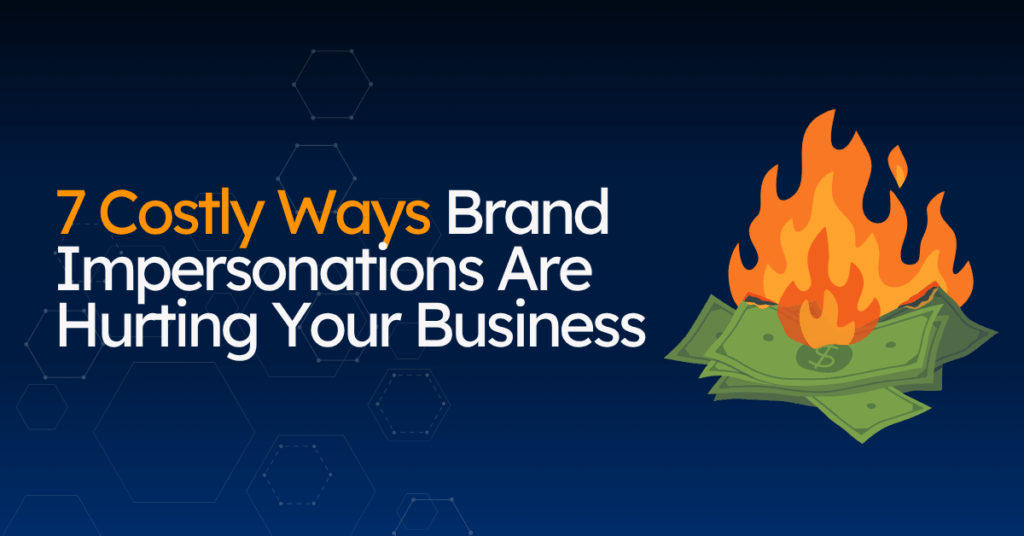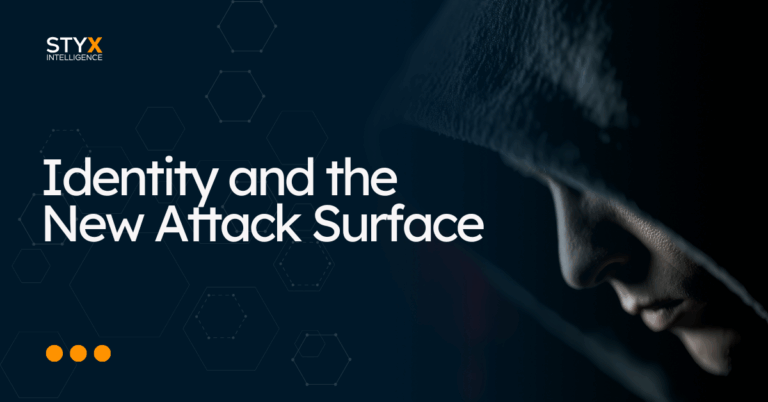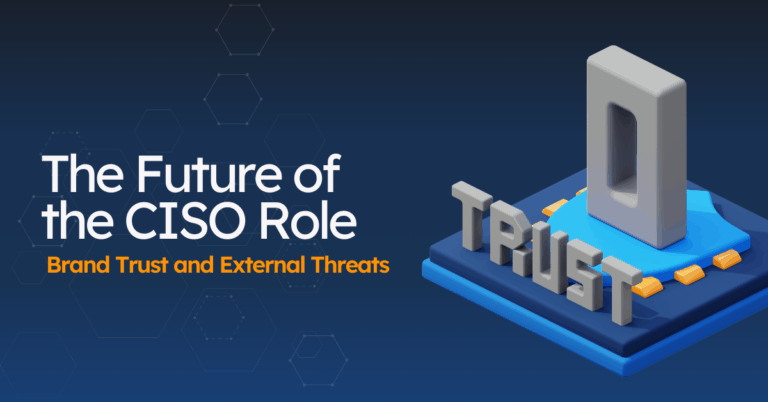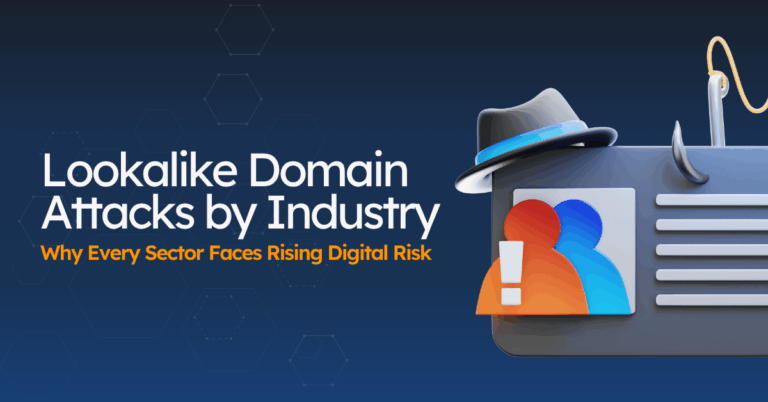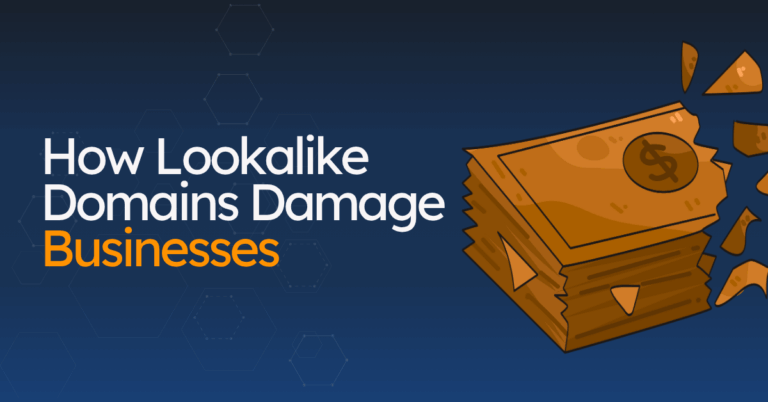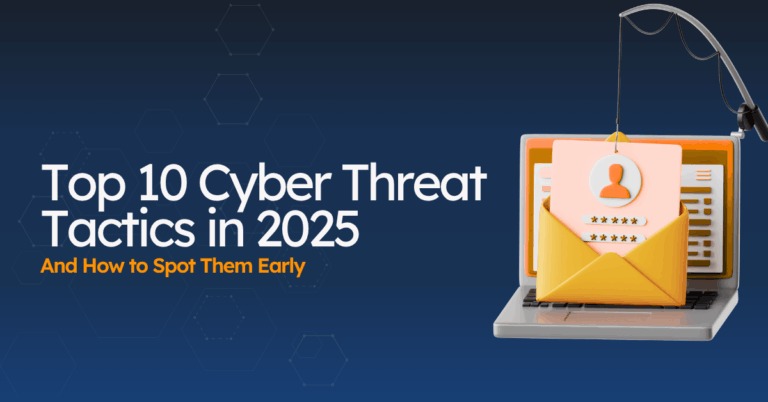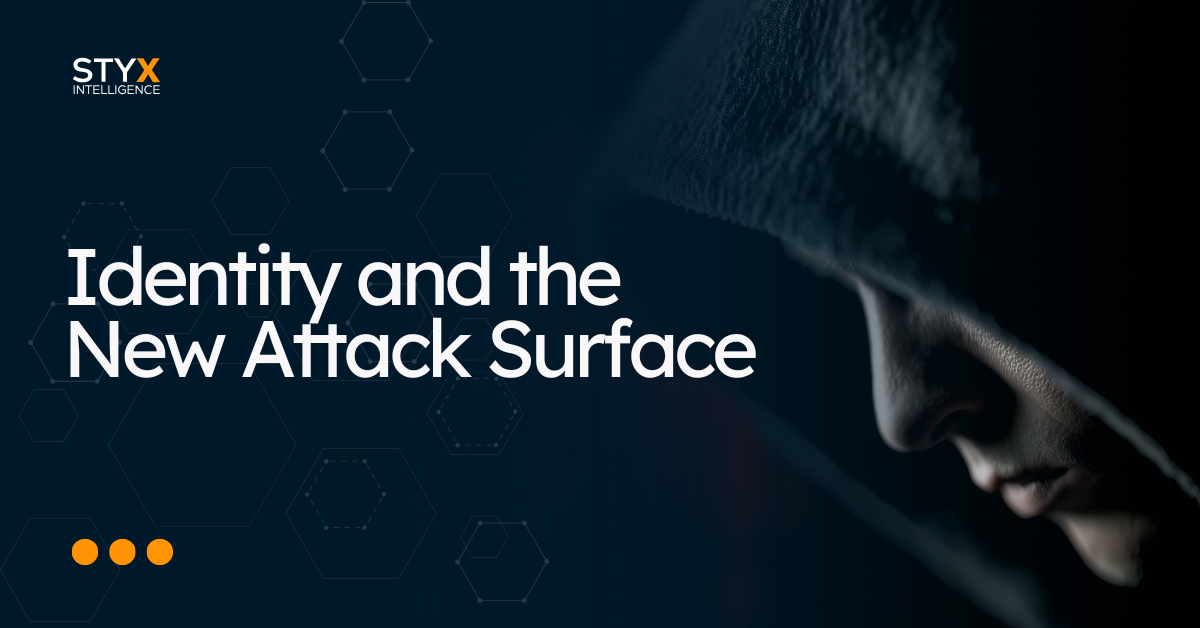What Is Brand Impersonation?
Brand impersonation is when someone pretends to be your business online to scam, mislead, or steal from your customers.
These attackers copy your logo, name, tone, or even your team members. They might create fake social media accounts, launch fake websites, or send emails that look like they’re coming from you.
The goal?
Trick people into trusting them, then get them to hand over money, passwords, or personal data.
And it works. Why?
Because your brand has already built that trust. Scammers just hijack it.
Learn more: What is Brand Protection?
Where Does Brand Impersonation Happen?
Impersonators happen wherever your brand has a digital presence or where customers expect to find you.
Common places include:
- Social Media: Fake brand pages, customer support accounts, or executive profiles on platforms like Instagram, TikTok, LinkedIn, and Facebook. Some even use AI-generated deepfake videos to fake credibility in ads or posts.
- Websites and Domains: Lookalike sites using slightly misspelled domains (e.g., paypal.com with a capital “i” instead of “L”). These are used to steal credentials or sell fake products.
- Email and SMS: Phishing messages pretending to be from your company, usually offering refunds, account alerts, or fake promos.
- Search Ads: Scammers pay to show fake ads above your real search results, hoping users click the wrong link.
- Messaging Apps: Fraudsters impersonate brands on WhatsApp, Telegram, or Messenger, often pushing scams or phishing links.
- App Stores: Fake mobile apps on Apple’s App Store or Google Play that copy your brand name and logo to steal data, push malware, or trick users into purchases.
- Forums and Niche Communities: Attackers post as your brand in places like Reddit, Discord, or even comment sections to spread misinformation or lure victims.
- AI Chatbots and Voice: Some attackers are testing AI bots that mimic brand support chats or automated voice calls, creating more believable scams at scale.
Our team gets these ones almost weekly:

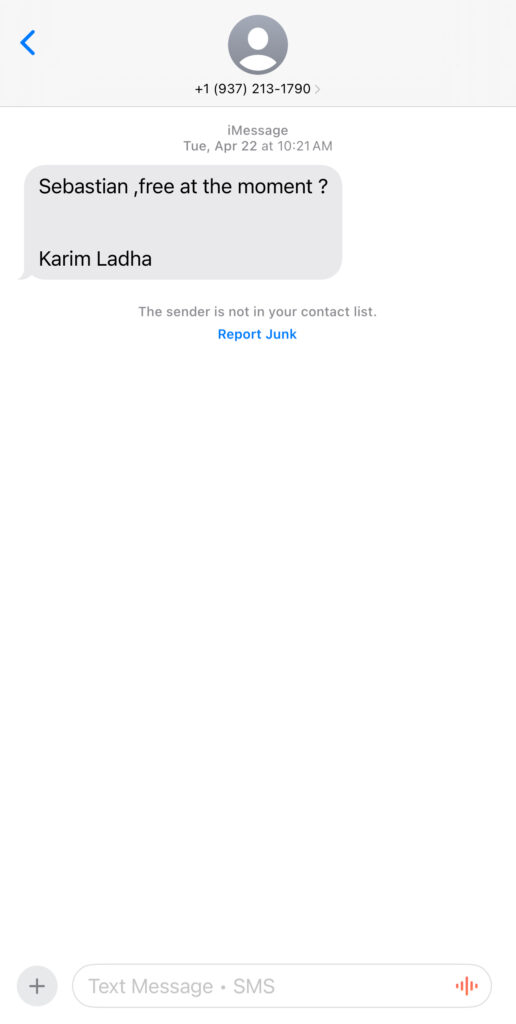
Brand impersonation can happen anywhere your name, logo, or reputation has value. That’s what makes it so hard to track and so costly when ignored.
Why Brand Impersonation Is So Dangerous
People trust brands they know. That trust is what drives clicks, sign-ups, sales, and loyalty. Impersonators take advantage of that.
Unfortunately, they not only fool your customers but also your partners, investors, and even your own team.
And when it happens, most people won’t stop to double-check. They’ll assume it’s real. And if it goes wrong, they’ll blame you.
That’s where the damage starts. One fake page, one spoofed ad, one deepfake video can wreck years of trust. You lose reputation, you lose revenue, and you lose control of your name online.
Let’s look at how brand impersonations affect your business
7 Costly Ways Brand Impersonators Are Hurting Your Business
1. Loss of Customer Trust
Brand impersonation hits hardest where it matters most: trust.
People expect your brand to protect their experience, not just their data. When someone gets tricked by a fake account, scam page, or spoofed message using your name, they don’t blame the scammer. They blame you.
That trust took years to earn… now it’s on the line.
Here’s what happens:
- Customers lose confidence that you’ll protect their data or identity.
- Even one bad experience can push them toward a competitor.
- Your support team starts fielding angry calls and messages.
- Negative sentiment spreads fast on social and review platforms.
The impact?
Public complaints, chargebacks, angry emails, and worse… people stop trusting your real messages, your real team, and your real site.
It’s hard to earn back what’s been lost.

2. Direct Revenue Loss
Yes, brand impersonations hit your reputation, but also your bottom line.
Fake ads, spoofed websites, and cloned social pages pull customers away from you. They think they’re buying from your brand, but they’re not. And when it goes wrong, they don’t come back. They move on, and take their money with them.
Here’s how you lose real revenue:
- Customers fall for fake websites or checkout pages.
- Scammers run counterfeit ads using your branding.
- Phishing links lead to stolen credentials and chargebacks.
- Angry buyers demand refunds from you, not the scammer.
In sectors like e-commerce, financial services, and retail, these attacks are constant.
One fake promo or spoofed product page can hijack hundreds of transactions.
The result:
- Lost sales.
- Increased support and refund costs.
- Long-term drop in customer lifetime value.
So… brand impersonation doesn’t just steal money, it steals loyalty, and with it, your future growth.
Learn more: Keep Your Retail Presence Safe Across Every Channel
3. Decline in Customer Acquisition
As you already know, brand impersonations scare off your current customers. However, it pushes away the next ones too.
When fake ads, emails, or accounts flood the web, prospects stop trusting what’s real. They hesitate to click. They ignore your campaigns. And they choose someone else.
Here’s how impersonation damages acquisition:
- Your ads perform worse because people think they’re scams
- Prospects don’t open emails or sign up after seeing fake versions
- Clickthrough rates drop and cost-per-lead goes up
- Sales teams struggle to book meetings or close deals
The trust that drives pipeline? It’s gone.
And now your marketing and sales teams are working harder for fewer results.
The impact?
Higher acquisition costs, fewer leads, and a slower path to growth. Even the best campaign can’t fix a broken reputation.
4. Damaged Brand Reputation
When impersonators use your name to scam people, your entire brand takes the hit.
It starts small. A fake account here, a misleading ad there. Then come the angry comments, bad reviews, and “don’t trust this company” posts.
Now it’s public. And everyone’s watching.
What that looks like in practice:
- Complaints pile up on social media and review platforms
- Media reports link your name to fraud or scams
- Forums like Reddit or Quora are flooded with complaints and bad comments about your company
- Partners and investors start asking hard questions
- Sentiment drops in social listening tools and brand trackers
The worst part? People remember.
Even after the fake accounts are gone, the damage sticks.
What you’re left with:
Lost trust, headlines you can’t erase, and a brand that feels less safe to buy from.
That’s what reputation damage really looks like.
Learn more: How to Deal With Social Media Impersonations?
5. Overloaded Teams
You know what makes it even worse?
Brand impersonations drain your team… how?
When fake accounts and scams start to spread, your people are the ones who have to clean up the mess. That means less time on real work, more time fighting fires.
Here’s how it hits your team:
- Customer service gets swamped with emails, calls, and DMs from confused or angry customers.
- Security teams spend hours tracking fake accounts and reporting them.
- Comms teams scramble to draft statements, respond to posts, and fix public confusion.
- Legal teams get involved to deal with reports, complaints, or platform takedown requests.
Everything slows down. Morale takes a hit. Your best people end up wasting time reacting instead of focusing on the work that moves your brand forward.
It creates stress, distraction, and burnout that can end up with them leaving your company.
6. Increased Legal, PR, and Insurance Costs
Brand impersonation turns into real costs fast.
You don’t just deal with scams, you deal with everything that comes after. Your legal, PR, and compliance teams all get pulled in, and the bills stack up.
What this looks like:
- Legal teams write and submit takedown notices, document incidents, and prepare statements.
- Comms teams handle press, social posts, and customer updates to protect your reputation.
- You may have to report the incident to regulators or law enforcement, depending on the case.
- If you have cyber insurance, premiums go up or claims get challenged.
- Incident reviews and audits pull time from other priorities.
The longer impersonation runs, the more people get involved, and the more it costs to fix.

7. Long-Term Business Impact
Brand impersonations damage your business for months, sometimes years.
Even after the fake accounts are gone, the damage sticks.
Why? Well…
- Lost customers take time and money to replace.
- Your sales team faces longer cycles and harder objections.
- Partners may hesitate to work with a brand seen as risky.
- Your recruiting brand suffers, making it harder to hire top talent.
- Investors and board members start asking harder questions.
These attacks slow growth. They stall momentum. They force your team to pause everything else just to get back to where you were.
That’s why this is much more than a security issues… it’s a business one.
Learn more: How to Spot and Take Down Fake LinkedIn Accounts.
Protecting Your Brand Online
Brand impersonation is just one threat. The bigger problem is letting others define your brand online before you do.
That’s where brand protection comes in.
It means keeping control of how your brand shows up across the internet, including social media, marketplaces, domains, news, forums, the dark web, and more.
It’s not just about stopping scams. It’s about owning your name, your reputation, and your presence everywhere people might see it.

Strong brand protection means you can:
- Detect and take down fake profiles, domains, or listings before they spread.
- Detect unauthorized use of your name, logo, or identity, and take back control of your brand image
- Protect your leadership and employees from targeted impersonation.
- Know what the world is saying about your brand. Track sentiment shifts, emerging threats, and trending narratives in real time.
- Respond faster with real alerts, not after angry customers start complaining.
- Build trust by showing you take security, privacy, and identity seriously.
Want to learn more about brand protection and how it helps your business?
Connect with our team and ask all the questions you have.

